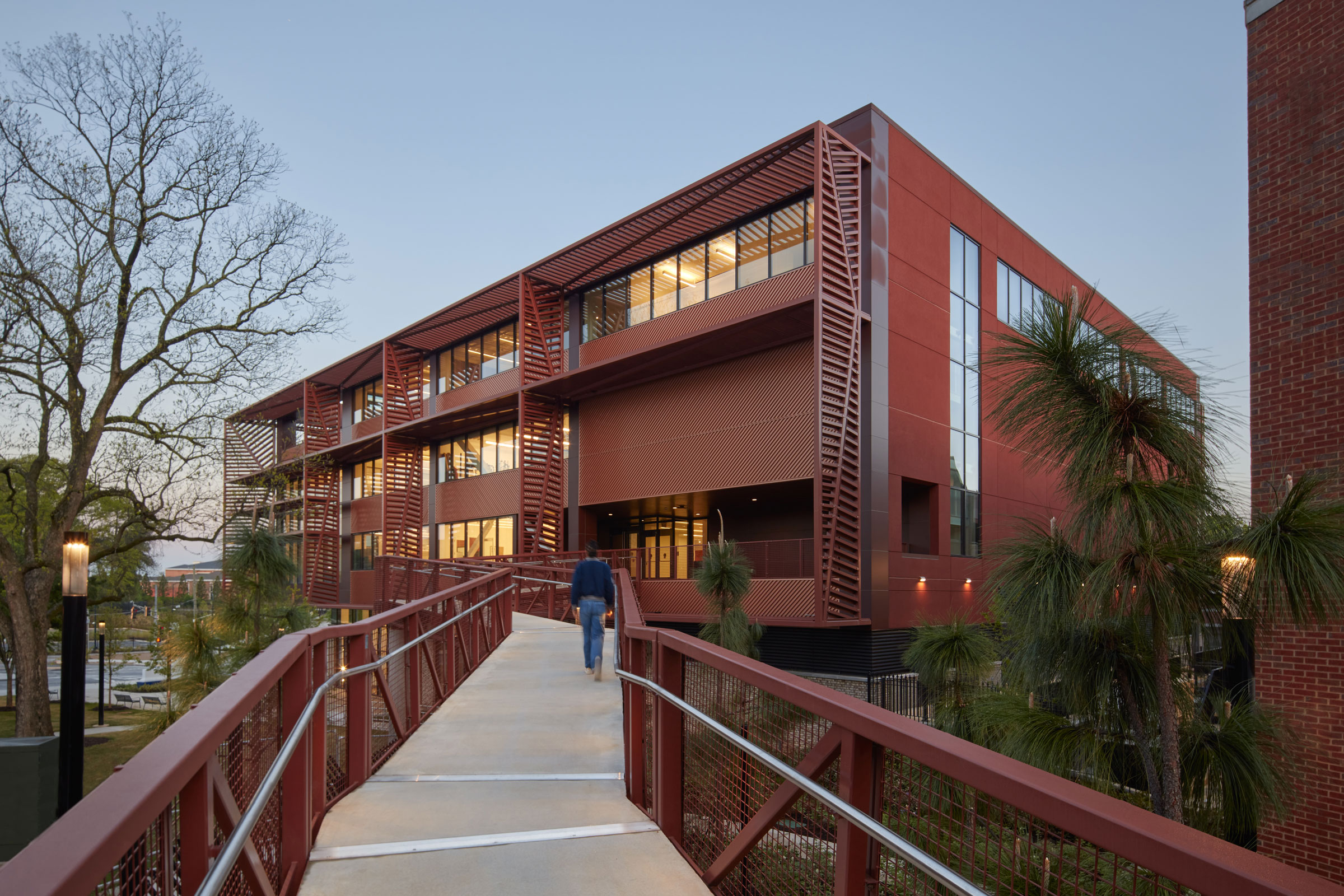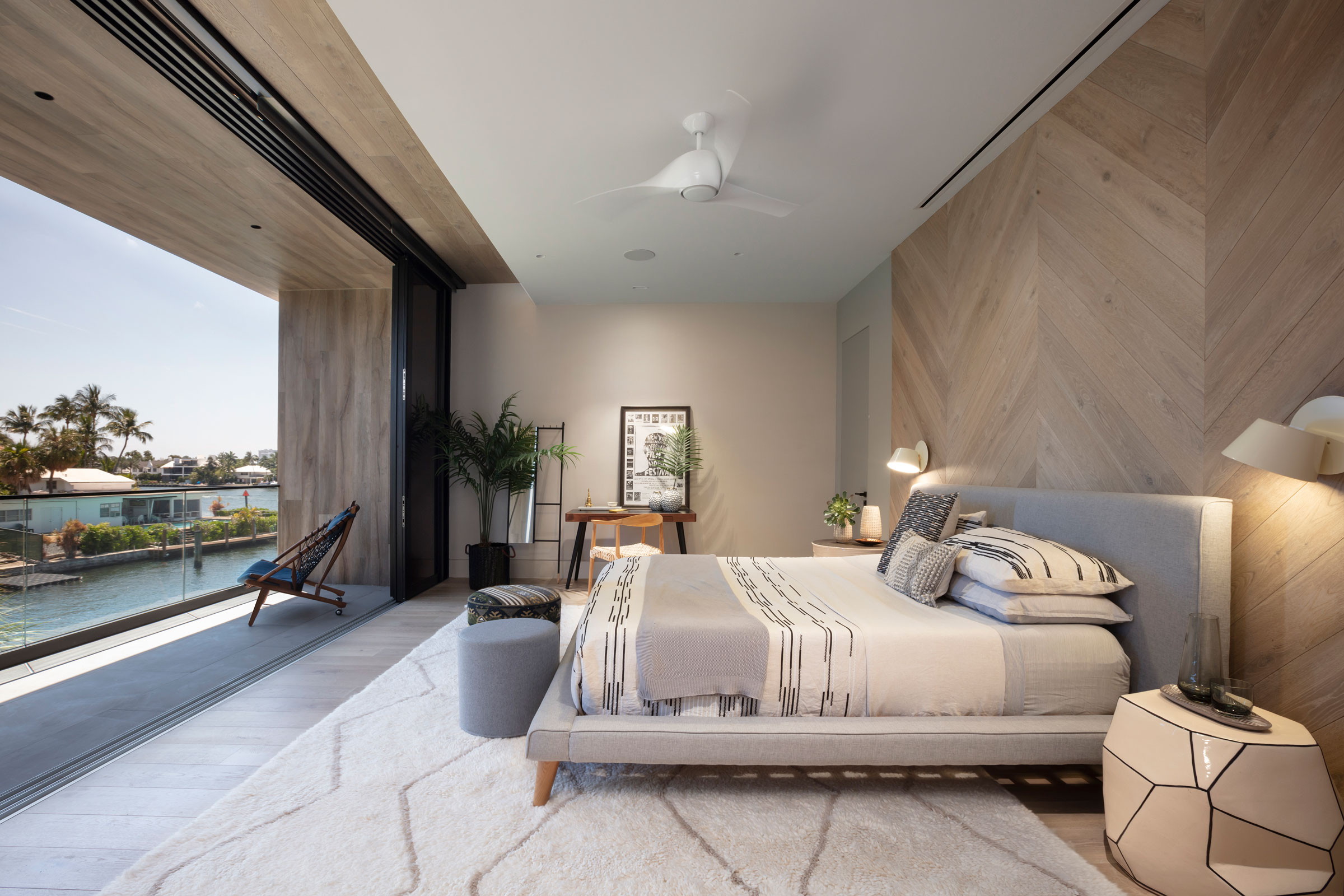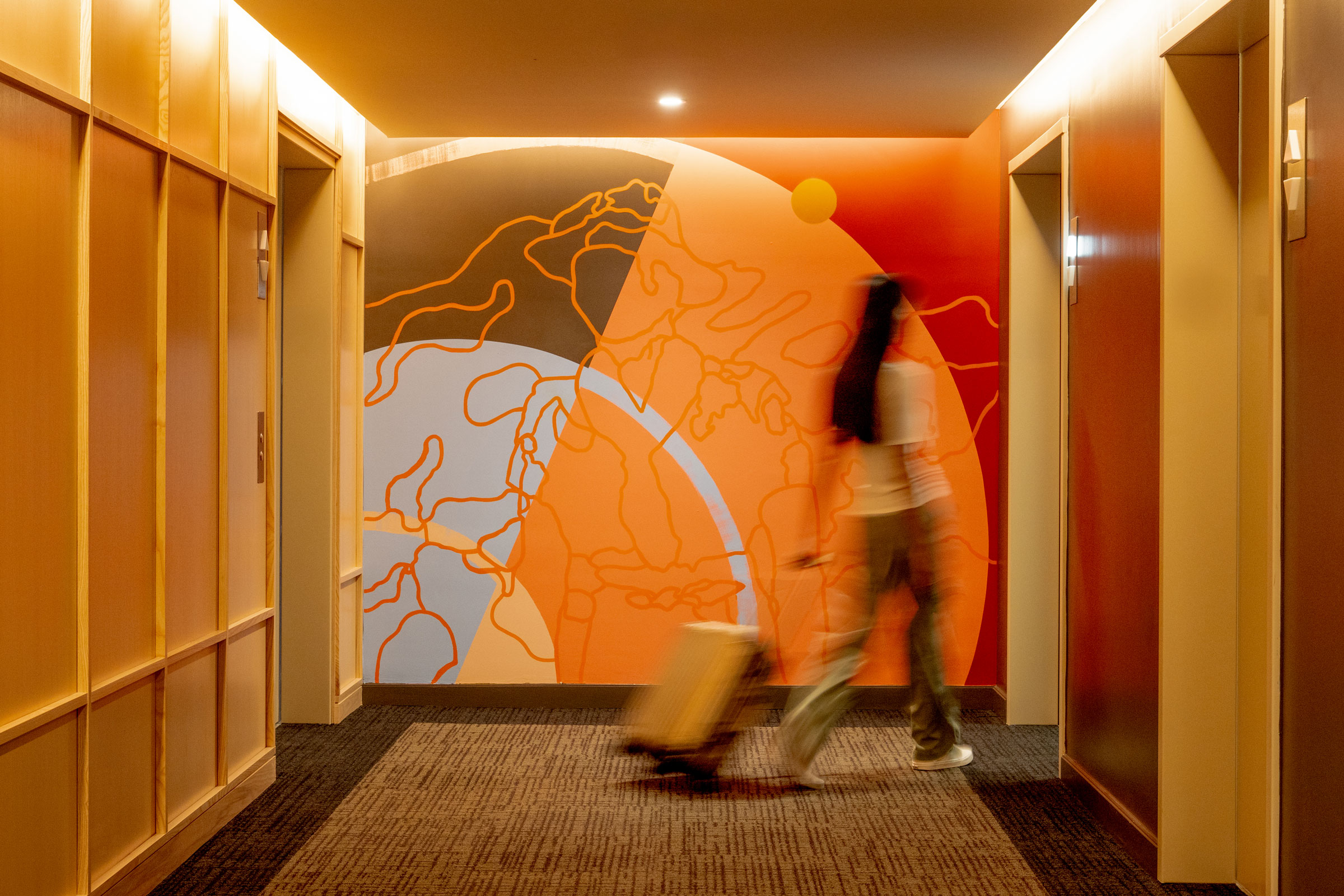Story at a glance:
- Screens on the facade of Spelman College’s new Center for Innovation & the Arts were designed to provide thermal comfort, allow in natural light, and reduce energy use and glare.
- Indoor and outdoor spaces on the ground level—including shaded “porches” that provide open-air areas for studying, dining, and gathering—create opportunities for the public and Spelman to come together.
- The Mary Campbell Schmidt Center for Innovation and the Arts is the first building to be located outside Spelman’s campus walls.
The first new academic facility at Spelman College in 25 years opened its doors in April 2025. The Mary Schmidt Campbell Center for Innovation & the Arts was designed by global architecture and urban design firm Studio Gang and will provide students at the historically Black college with a cross-disciplinary and collaborative learning environment.
Project Challenges
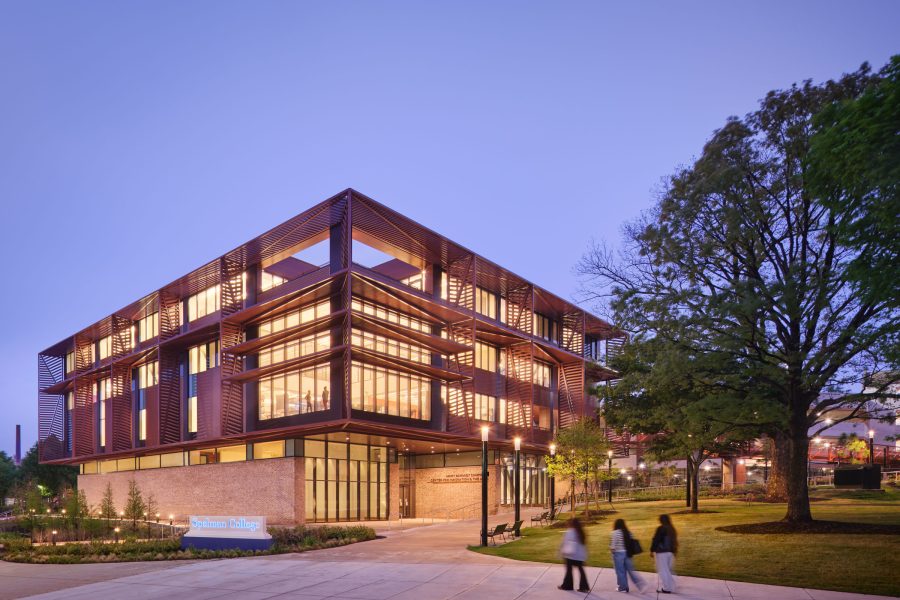
Screens on the facade were designed to provide thermal comfort, allow in natural light, and reduce energy use and glare. “The deepest fins are on the southern and western sides, while the northern side has shallower ones since it doesn’t receive as much direct sunlight. We used standard steel and metal sizes for the screens to control costs and simplify fabrication,” says Margaret Cavenagh, who led the Studio Gang design team for the project. Photo by Tom Harris, courtesy of Studio Gang
“The Mary Campbell Schmidt Center for Innovation and the Arts is the first building to be located outside Spelman’s campus walls. That meant we had to find a way for the building to feel connected to the surrounding neighborhood, while also providing students and faculty with direct, secure access to the private campus,” says Margaret Cavenagh, who led the Studio Gang design team for the project. “To achieve this we oriented the building to act like a ‘front door’ to the campus and created outdoor ‘porches’ that invite the local community in at the ground level. On the upper floors students and faculty have access to an elevated walkway that provides a safe and seamless link to the campus.”
The team also had to create opportunities for collaboration between distinct and different academic programs. “This was a challenge because of the varying acoustic and technical requirements of each program,” Cavenagh says. “For instance, some spaces are used for recording and rehearsing music, so we acoustically and structurally separated these from programs that need quieter environments.”
Providing flexible spaces throughout the building was crucial. The ground floor lobby is designed for multiple uses—including performances, lectures, exhibitions, and casual and formal social gatherings—and the outdoor “porches” provide students and the public with space for studying, dining, and socializing,” Cavenagh says.
The shaded “porch” areas also extend thermal comfort hours, allowing people to be outside for more weeks of the year. “At the heart of the center is the Forum, a double-height space surrounded by classrooms so that everyone can see into it. It has pinnable walls, adjustable lighting, flexible furniture, and large desk surfaces, so it can be used for different types of activities.”
More Sustainable Details
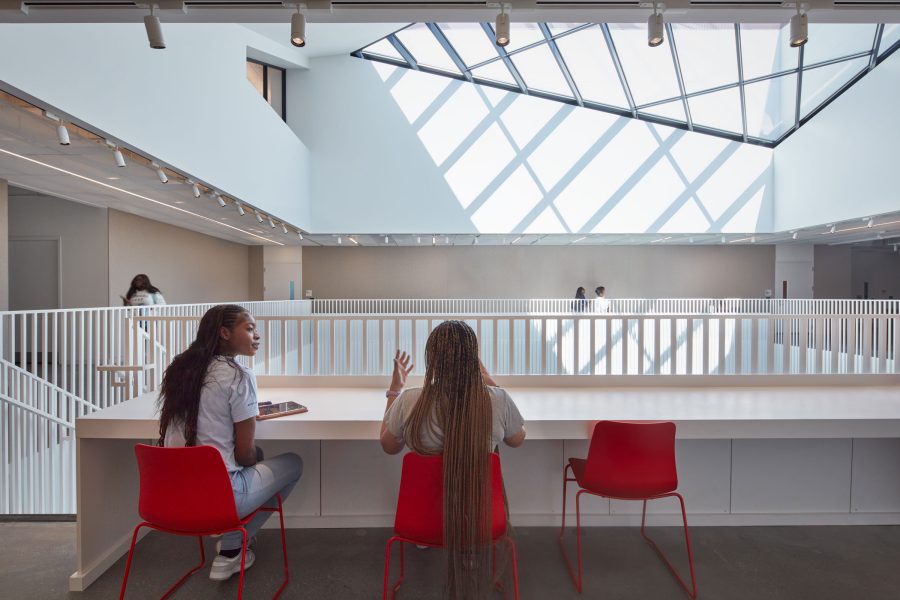
A skylight brings light deep into the interior at the Spelman College Center for
Innovation & the Arts. Photo courtesy of Studio Gang
The materiality and color of the building’s distinct facade draws from regional geology and Spelman’s architectural tradition. Flemish bond brick, seen all across campus, recalls Georgia’s red clay soil and is used on the ground level, while flat metal panels on the upper volume give the building a contemporary character that reflects the innovation happening there.
The facade’s layered screens and brise-soleils create a sense of transparency by revealing glimpses of activity, as well as offer several functions, like shading the interior and bringing in natural light.
A central skylight also brings light deep into the core of the building and the center of the Forum. “We also included windows in almost every teaching and office space to provide connections to the exterior and bring natural light into the interior. Having this visual connection to the outdoors allows people to see the passing of time and changes in the weather, which is important for their health and comfort,” Cavenagh says.
The Center for Innovation & the Arts is designed to welcome a mix of people and ideas from across the campus and community.
The central skylight extends across collaboration spaces on the second and third floors, daylighting both spaces. “We also used fewer, larger pieces of glazing to reduce the number of joints. The panels are angled to the north to permit daylight to stream in, but limit heat gain from direct sunlight. The southern side, which is opaque, also limits heat gain. The skylight is set into the fourth floor, reducing the building’s overall height and allowing it to not be visible from the exterior.”
The design integrates several passive shading and cooling strategies to improve the building’s environmental performance. Patterned sunshades and screens on the upper levels are tuned to the sun’s angles to provide thermal comfort and allow in natural light while reducing energy use, glare, and the building’s mechanical load.
Landscape features like soft gardens and rainwater swales help manage stormwater onsite and reduce stress on local infrastructure. A large, healthy pecan tree on the site was also protected and retained as part of the landscape. Today it provides shade over the elevated walkway to the campus and helps to naturally cool grassy seating areas on the south side of the building.
Making Connections
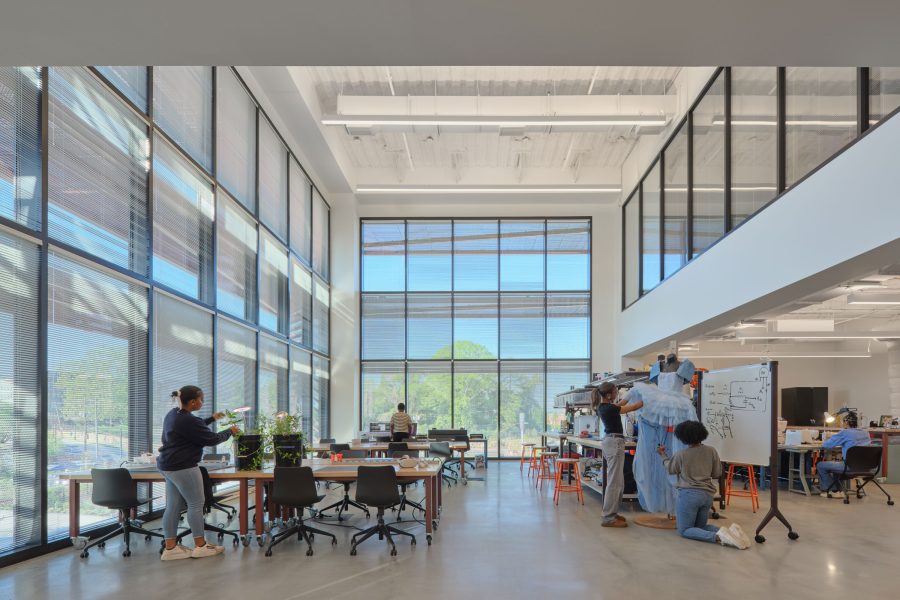
Inside the Arthur M. Blank Innovation Lab at Spelman College. Photo by Tom Harris, courtesy of Studio Gang
As the first building outside of the college’s walls, the center needed to help strengthen the connection between Spelman and the Westside Atlanta community. “To create a sense of welcome for the local community and nearby institutions like Morehouse College, we oriented the building to face out toward the neighborhood,” Cavenagh says, further emphasizing the “front door” concept.
Learning and study spaces, along with the Innovation Lab, on the upper floors also provide views outside and create a sense of floating among the tree canopies, so the project fits seamlessly into its environs.
“The Center for Innovation & the Arts is designed to welcome a mix of people and ideas from across the campus and community. We wanted the building to create new connections between disciplines and to help find synergies between Spelman and the broader neighborhood,” says Jeanne Gang, founding partner of Studio Gang. “Flexible spaces for learning and gathering throughout the building make it a place where collaboration can thrive.”
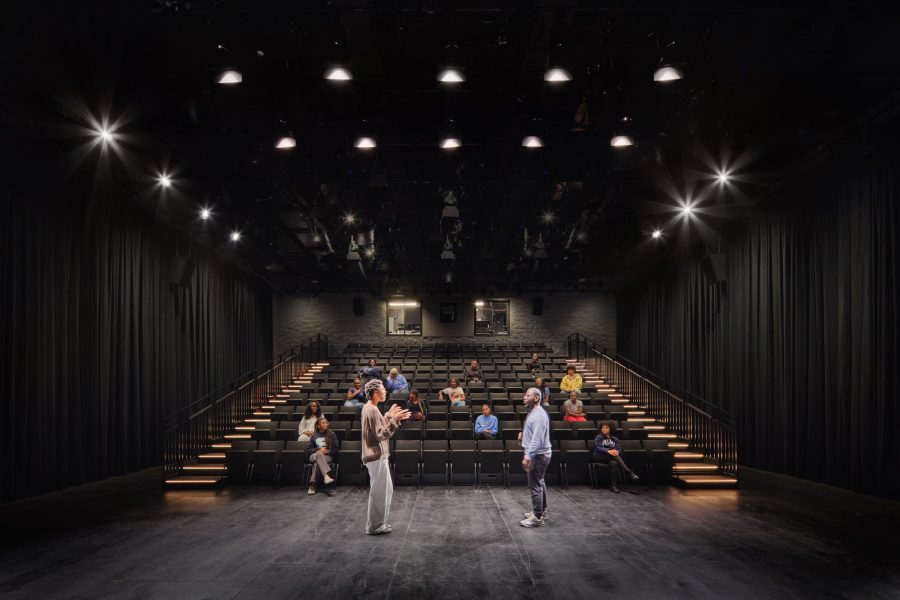
The Prince Theater at Spelman College. Photo by Tom Harris, courtesy of Studio Gang

Drawing courtesy of Studio Gang

